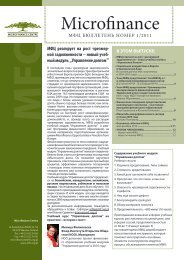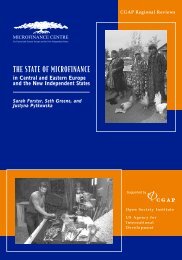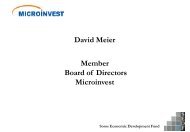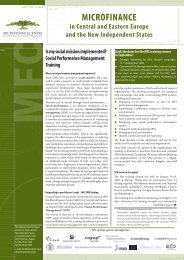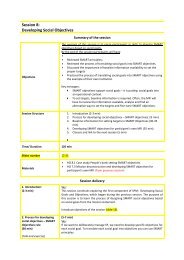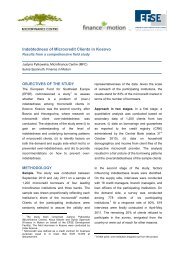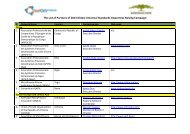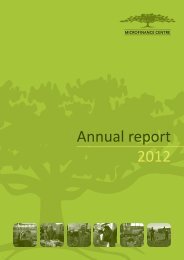Value Chains research report Tajikistan final - Microfinance Centre
Value Chains research report Tajikistan final - Microfinance Centre
Value Chains research report Tajikistan final - Microfinance Centre
You also want an ePaper? Increase the reach of your titles
YUMPU automatically turns print PDFs into web optimized ePapers that Google loves.
Because the majority of the population of <strong>Tajikistan</strong>, including both meat<br />
consumers and butchers are Muslims it is necessary to consider the religious<br />
requirements of slaughter.<br />
Marketing of Meat.<br />
Marketing of meat and meat products is not developed in <strong>Tajikistan</strong>. Marketing of meat<br />
considers four factors:<br />
• Commodity for general use,<br />
• Generic product non-branded,<br />
• <strong>Value</strong> added products, and<br />
• Products with value add cost of a brand.<br />
Currently, all meats in <strong>Tajikistan</strong> are selling for general use as a raw production.<br />
There exists extensive opportunities for brand and process meat product development<br />
adding value to meat products. Branding is another opportunity as there currently are<br />
no identifiable brands. Currently, meat purveyors market beef as a commodity and have<br />
not yet realized the opportunities presented by improved quality and consistency.<br />
Meat Sale<br />
Meat sales are through local stalls along the roads, trade centers and markets.<br />
Often, the butcher is the retailer, handling product from purchase at the livestock market<br />
through slaughter then retail sale. There is also consolidation of several meat stalls<br />
under the control of one or several butchers who employ sales people for selling the<br />
meat. The role of these meat sellers is carcass cutting and meat sales. Butchers, who<br />
have control over several sale points, are the people who control the prices in the<br />
market. There is no wholesale meat market as most butchers do not want centralized<br />
wholesale sales to occur.<br />
Before the carcass is cut, a veterinarian provides a certificate of inspection<br />
following slaughter. Usually, a veterinarian takes 800 grams of meat for analysis.<br />
Analysis preparations are centralized in regional laboratories. However, butchers<br />
recognized that current inspection is superficial.<br />
If the farmer slaughters cattle himself (to save money or as a forced slaughter),<br />
the meat will be brought to the morning market and sold to meat traders at wholesale<br />
prices. Sometimes in the morning, such carcass can be resold between several<br />
businessmen, from one to another and each will add a margin. Usually, the meat does<br />
not have a certificate from a veterinarian certifying slaughter inspection.<br />
Seasonal sales of meat occur between July and September. The lowest amount<br />
of meat sold occurs during the winter, which is associated with the procurement of cattle<br />
for meat, among the population<br />
Butchers may actually lose money on the sale of meat if the it is not sold quickly<br />
due to shrinkage and stall rental costs. The profit of the butcher consist of the following<br />
98




